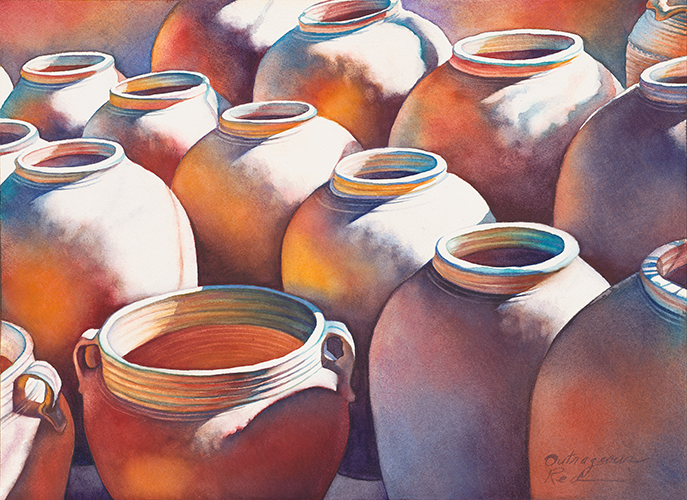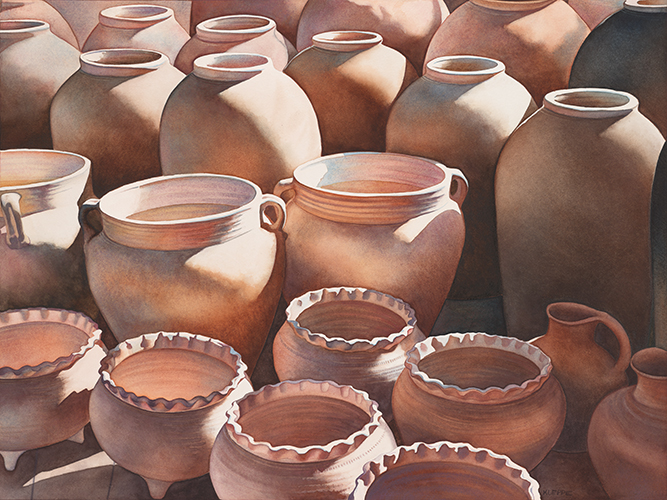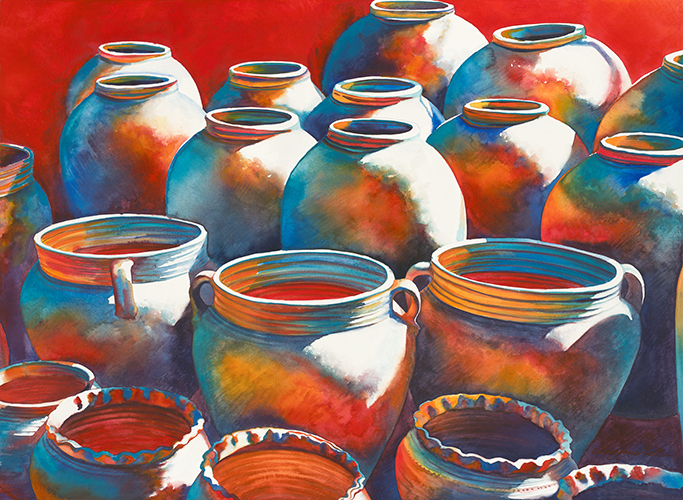The Fine Art and Photography of
Shirley R. Kleppe
By emphasizing strong and unique ideas, my art reflects a passionate, intuitive view of life. Art which has a universal quality, which could be found in any age or culture.
On a more conscious level, I want to produce multi-dimensional paintings, which will allow the viewer to step into the painting: to visually run their hands over the smooth and ridged surfaces; to feel the heat of the reds and cool of the blues; to hear the breezes come from the inner recesses of the composition; to taste the surfaces; to smell the pungency of the moisture swirling around and out of the shadows. To become involved and participate is what makes a person feel vibrant and alive. By challenging the senses, the intuitive is embraced: to capture colors and feelings that go undetected by cursory evaluation. The idea is to paint colors and light that are unseen. This represents an intuitive perception of what could be seen if all senses were represented by color: to show particular color and light where none are truly seen by the eye.
Not until I started painting curved surfaces did I understand direct and reflected light. I now know that all surfaces reflect and bounce color, because light reflects and bounces. This revelation indeed is what gives dimension to vision. Our eyes see only a small band of color and light. It is logical to think that light that is direct and reflected on one area will be different from light that is direct and reflected in another, no matter how far apart the areas may be-one inch, one yard, or one mile. If this hypothesis is true, the color will also vary.
I also have a theory on perceived dimension in relationship to edges. To achieve significant life-like qualities in representational two-dimensional art, I think the closest edge to the viewer will be the clearest. The edge farther away will be less distinct. Well, what an original idea! The difference here is that ALL parts of an object are subject to the same premise as the whole painting. Now, that might be new. I think that all points along the same plane have the same clarity or lack of it. Hold an object in front of your eyes. Notice how all the closest edges are clear and all others are fuzzy. The front edges remain clear and the back ones drop off, because of the way our eyes spot focus. We naturally view life by rapid, single focusing on the front planes of objects, one spot at a time. (This is not to say we do not or cannot focus on the back planes of an object. It is usually done for further information.) Translation: except in composition backgrounds where great distances are interpreted, it makes no difference to the position in the composition an object is for clarity. The closest planes or areas hold the edge while the back planes or areas soften off. As the object recedes into the distance, the clarity difference between the front and back edges diminishes.
In painting shapes of the composition, I place strongly pigmented colors side by side, blending or grading only the overlapping areas to maintain the color brilliance and surface quality of the paper without over-working the area. A conscious effort is made to incorporate the intuitive use of the senses for color balance and to use the theory on edges.
My method of working and understanding is at a threshold of evolving into something more than daily thoughts and visual pastime. To realize these endeavors, the paintings must become much larger to fully embrace the feeling of involvement. To go beyond the original intents of only allowing visual sensory involvement in two-dimensional art, paintings must be able to do more than be seen. To add the sense of touch in terms of warm and cool by using paints which are heat producing, would add a new dimension to viewer participation. Not only would a viewer see the painting, he could also touch the surface to feel the warm and cool areas. This could be very exciting.




